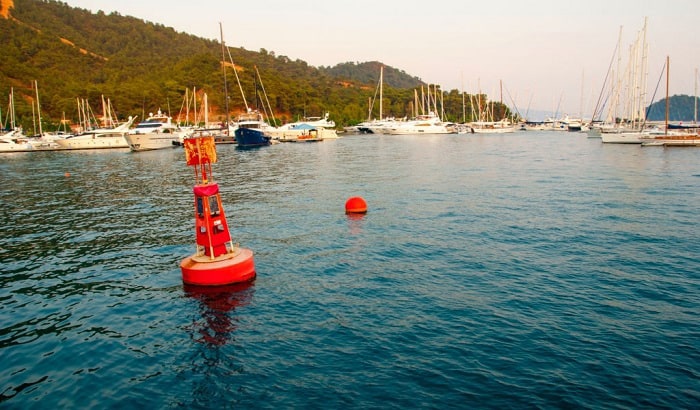The color of safe water markers can vary depending on the location. In the United States, safe water markers are typically red, orange, or yellow.
When you’re out on the water, it’s important to be aware of your surroundings and know where the safe areas are. Water markers can help with this, but it’s important to know what color they are. Red and orange markers typically indicate shallow water or danger, while green and white markers show deeper water that is safe for swimming.
Pay attention to the colors of the markers when you’re out on the water, and stay safe!
Quick Navigation
Do’s and Don’ts – How to use Alcohol Markers like a PRO
What is the Color of the Safe Water Buoy?
The color of the safe water buoy is red. This buoy is used to mark the location of a safe place to swim. It is important to know the color of the safe water buoy so that you can easily find it in an emergency.
What Does a Safe Water Mark Look Like?
Most people know that a safe water mark looks like a blue rectangle with a white wave inside of it. However, did you know that the origins of this symbol date back to 1876? The International Convention for the Safety of Life at Sea (SOLAS) adopted the safe water mark in 1960.
The safe water mark is used as an international symbol of safety and indicates the level above which it is safe for a vessel to operate. It is also used as a warning sign for hazards such as shallow water, submerged rocks, or other dangers.
So, next time you see a safe water mark, you’ll know that it’s there to keep you and your vessel safe!
What is a Hazard Marker for Water?
A hazard marker is a sign or buoy that is used to warn people of a potential danger in the area. Hazard markers are usually placed in areas where there is a high risk of drowning or other water-related accidents. Common hazards that are marked with signs or buoys include rip currents, undertows, and submerged rocks or reefs.
Which Color is Safe Navigable Water on a Chart?
On a nautical chart, safe navigable waters are typically shown as being blue in color. This is because blue is the color that is most easily seen when looking out over large bodies of water, and it also provides a good contrast against other colors on the map. If you are ever unsure about the meaning of a particular color on a chart, you can always consult the legend or key located nearby.

Credit: www.ridetheducksofseattle.com
What Symbol on a Regulatory Marker is Used to Mark a No-Wake Or Idle Speed Area?
Most regulatory markers in the United States use symbols to indicate what type of restriction is in place. For example, a marker with a circle and slash symbol indicates that swimming is not allowed in that area. A marker with a square and slash symbol indicates that boating is not allowed in that area.
And a marker with a triangle and slash symbol indicates that fishing is not allowed in that area.
The most common symbol used to indicate a no-wake or idle speed area is a diamond shape with waves inside it. This symbol is usually placed on markers near shorelines, docks, marinas, and other areas where boats may be operating at slow speeds.
In some cases, the words “no wake” or “idle speed” may also be printed beneath the diamond symbol.
Which Symbol on a Regulatory Marker Indicates Hazards Such As Rocks Or Stumps?
If you’re out on the water, it’s important to be aware of your surroundings and know what the different symbols on regulatory markers mean. One symbol that indicates hazards such as rocks or stumps is a square with a diagonal line through it. This means that there is an obstruction in the water ahead and you should exercise caution.
Other symbols include a circle with a diagonal line through it, which indicates shallow water, and a triangle with a diagonal line through it, which indicates high waves. By being aware of these symbols, you can help ensure a safe and enjoyable experience while out on the water.
You See a White Marker With an Orange Circle And Black Lettering. What Does This Marker Tell You?
If you see a white marker with an orange circle and black lettering, it’s telling you that the area ahead is potentially hazardous due to high winds. The marker is part of a system developed by the National Weather Service to help people avoid dangerous areas during severe weather events.
Conclusion
According to the United States Environmental Protection Agency, safe water markers are typically blue or green. The color of the marker is not as important as the message it conveys, which is that the water is safe to drink.
Leave a Reply